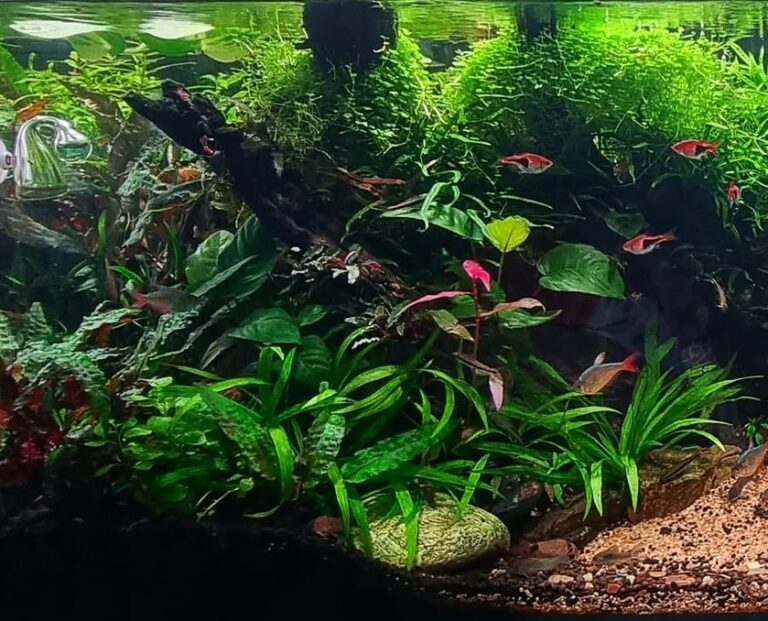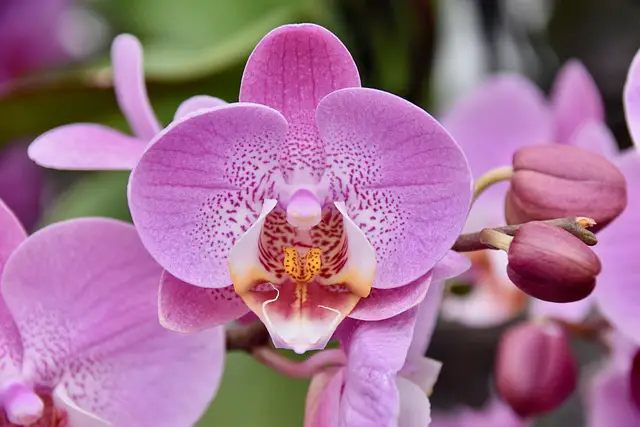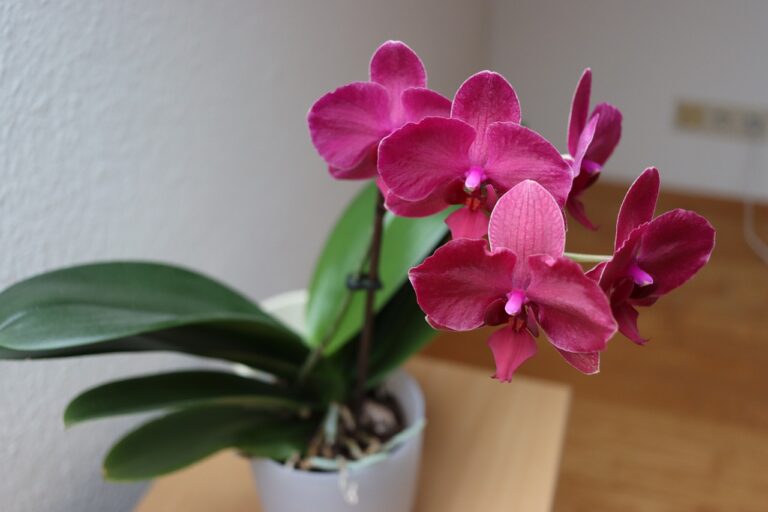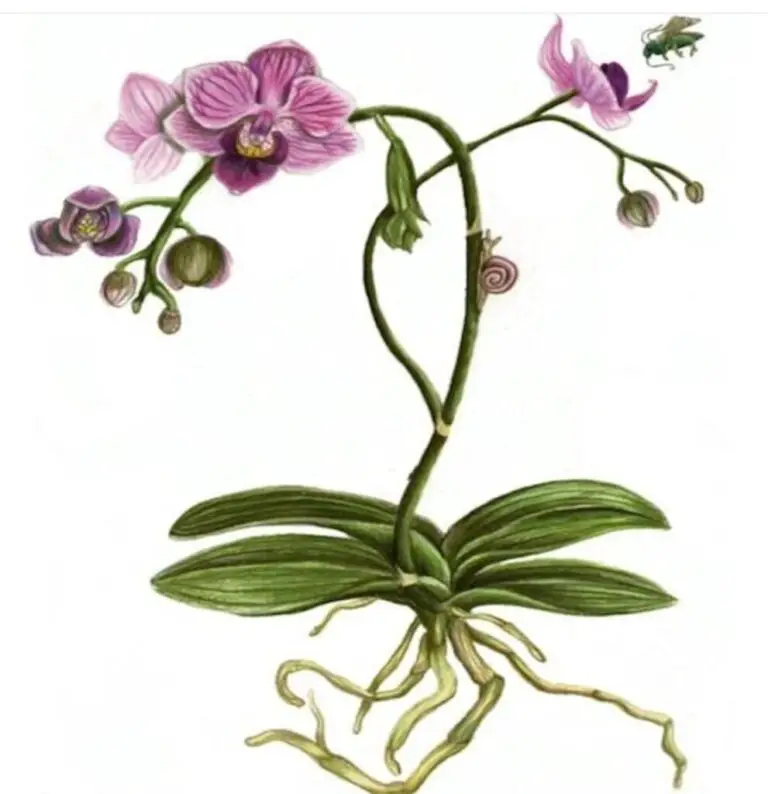The lotus plant (Nelumbo nucifera) is one of the most stunning and revered aquatic plants in the world. With its exquisite flowers that rise elegantly above the water’s surface, the lotus symbolises purity, enlightenment, and resilience in many cultures. Beyond its cultural significance, it is also a rewarding plant to grow, adding beauty and tranquillity to ponds, water gardens, and even containers.
Despite its delicate appearance, the lotus is a hardy plant that can thrive with the right care. It flourishes in warm, sunny conditions and requires a specific growing environment to reach its full potential. Whether you’re an experienced gardener or a beginner looking to grow your first lotus, understanding its needs is crucial for success.
- 1 Lotus plant (Nelumbo Nucifera)
- 2 Understanding the Sacred Lotus Plant
- 3 Essential Growing Requirements for Lotus Plants
- 4 Selecting the Right Container and Location
- 5 Soil and Water Requirements.
- 6 Planting Your Lotus: Step-by-Step Process
- 7 Seasonal Care and Maintenance
- 8 Fertilization and Nutrition Guide
- 9 Common Problems and Solutions
- 10 Propagation Methods for Lotus Plants
- 11 Harvesting and Using Lotus Plants
- 12 Conclusion: Embracing the Beauty of Lotus Cultivation
- 13 FAQ
Lotus plant (Nelumbo Nucifera)
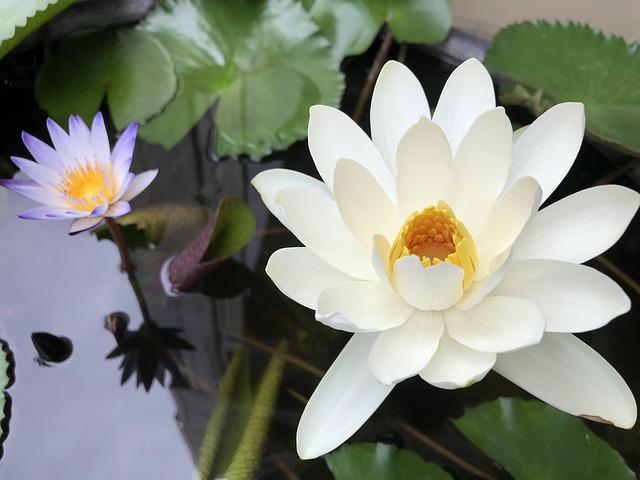
This guide will walk you through everything you need to know about growing and caring for lotus plants, from selecting the right tuber and planting it correctly to ensuring it receives the proper nutrients, sunlight, and water conditions. You’ll also learn how to maintain healthy growth, encourage vibrant blooms, and manage seasonal changes, including overwintering.
Whether you want to grow lotus in a backyard pond, a large container, or a decorative water feature, this guide will provide you with step-by-step instructions to help your lotus thrive. By following these care tips, you can enjoy the breathtaking beauty of this iconic plant year after year.
Understanding the Sacred Lotus Plant
The lotus plant has been a of spiritual growth, beauty, and rebirth for thousands of years. Its unique flowers and large leaves make it popular for gardens and ponds. To truly appreciate the lotus, knowing its history and the different lotus plant varieties is key.
In many Asian cultures, the lotus plant symbolizes enlightenment and spiritual growth. It’s often linked with water lily care and pond plants. The plant’s ability to bloom in muddy waters, yet remain clean, is a powerful metaphor for spiritual growth and transformation.
Historical Significance and Cultural Importance
The lotus plant has been part of human culture for thousands of years. Ancient civilizations like Egypt and China revered it as a sacred symbol. In Hinduism, it’s linked with the goddess Lakshmi, who is often depicted sitting on a lotus flower. The lotus plant’s cultural significance goes beyond its spiritual meaning, making it a popular choice for pond plants and water lily care.
Different Varieties of Lotus Plants
There are several lotus plant varieties available, each with unique characteristics and growth patterns. Popular varieties include the sacred lotus, the American lotus, and the Chinese lotus. When choosing a lotus plant variety, consider climate, soil type, and water lily care requirements.
Natural Habitat and Growth Patterns
The lotus plant thrives in aquatic environments, with its roots buried in the mud and its leaves and flowers floating on the surface. To create a natural habitat for your lotus plant, use pond plants and water lily care techniques. Understanding the lotus plant’s natural growth patterns and habitat helps create a beautiful and thriving environment for your plant to flourish.
Essential Growing Requirements for Lotus Plants
Lotus plant care is all about the right conditions for growth. To keep your lotus plant healthy, you need to know what it needs. They love full sun to partial shade, warm water, and rich soil.
When growing lotus plants, choose a deep container. They can grow in small pots or large ponds.
Some key factors to consider for lotus plant care include:
- Light: Lotus plants need full sun to partial shade, perfect for outdoor gardens or ponds.
- Temperature: Warm water is key, with temperatures between 75 to 87 degrees Fahrenheit.
- Soil: A mix of clay, silt, and sand is needed for nutrient-rich soil.
Lotus plant care is more than just the right conditions. It’s also about keeping the plant healthy and avoiding common problems. With proper care, lotus plants can thrive and add beauty to your garden or pond.
Selecting the Right Container and Location
Choosing the right container and location is key for growing lotus plants. The container must be large enough and made of durable, non-toxic material. It should also get the right amount of sunlight and be protected from strong winds.
Lotus plants do best in containers that are 12-18 inches deep and 24-36 inches wide. The material should handle outdoor weather well and be safe for the plant. Popular choices include plastic, ceramic, and fiberglass.
Container Size and Material Requirements
Here are some key considerations for container size and material:
- Container depth: at least 12-18 inches
- Container width: at least 24-36 inches
- Material: durable and non-toxic, such as plastic, ceramic, or fiberglass
For pond plants like lotus, proper care is crucial. This includes the right water and nutrients, and protection from pests and diseases. The right container and location, along with good care, will help your lotus plant thrive.
Optimal Positioning for Growth
Lotus plants need full sun to partial shade and should avoid strong winds. They also need a lot of water, making them perfect for ponds. By following these tips and caring for your aquatic plants, your lotus plant will grow and flourish.
| Container Size | Material | Location |
|---|---|---|
| 12-18 inches deep, 24-36 inches wide | Plastic, ceramic, or fiberglass | Full sun to partial shade, protected from strong winds |
Soil and Water Requirements.
For healthy growth, lotus plants require the proper soil and water.They prefer a mix of clay, silt, and sand for nutrients. Keeping the water clean and warm is also key, as lotus plants are sensitive to pollution and algae.
For the best growth, the water should be free of harmful substances and have a balanced pH. Here are important points for lotus plant soil and water quality:
- Soil pH: slightly acidic to neutral (5.5-7.0)
- Nutrient levels: balanced mix of nitrogen, phosphorus, and potassium
- Water temperature: warm, between 75-87°F (24-31°C)
- Water depth: at least 12-18 inches (30-45 cm) to allow for proper root growth
By giving your lotus plant the right lotus plant soil and water quality, you’ll enjoy its stunning blooms and leaves. Always check and keep the aquatic plant care conditions right to keep your plant healthy and vibrant.
Planting Your Lotus: Step-by-Step Process
Planting a lotus plant is rewarding but needs careful planning. To make sure your aquatic plant growth succeeds, follow a step-by-step guide.
Timing is key when planting lotus. The best time is in spring or summer when the water is warm. This helps the plant grow well before winter.
When to Plant Lotus
The best water temperature for planting lotus is 70-90°F (21-32°C). This range supports healthy aquatic plant growth and prevents disease.
Proper Planting Techniques
For good lotus plant care, plant the tuber right. The tuber should go in a container that’s 12-18 inches deep. The soil should be nutrient-rich.
- Make sure the container is at least 12 to 18 inches deep.
- Use a soil that is rich in nutrients and has a pH between 6.5-7.5
- Plant the tuber 2-3 inches below the soil surface
By following these steps and giving your lotus the right care, you’ll enjoy its beauty and benefits for years.
Seasonal Care and Maintenance
Lotus plant maintenance is key to keeping it healthy all year. Aquatic plant care changes with the seasons. In spring, fertilize and prune to boost growth. This step is vital for strong roots and stems.
Seasonal changes mean different needs for the lotus plant. In summer, it needs regular water and protection from heat. Use shading and set watering schedules for this. In fall, harvest and prepare for winter to keep it alive.
Important seasonal care tips include:
- Fertilization: Give it nutrients for growth
- Pruning: Keep it healthy and prevent too much growth
- Watering: Make sure it gets enough water, especially in summer
- Protection: Keep it safe from extreme weather

Follow these tips for aquatic plant care to keep your lotus plant thriving. Be ready to adjust your care as the seasons change. With proper seasonal care and maintenance, your lotus plant will bloom beautifully and create a peaceful water space.
| Season | Care Requirements |
|---|---|
| Spring | Fertilization, pruning, and planting |
| Summer | Regular watering, protection from extreme temperatures |
| Fall | Harvesting, preparation for winter |
| Winter | Protection from cold temperatures, reduced watering |
Fertilization and Nutrition Guide
Lotus plant fertilization is key for healthy growth. It provides the nutrients needed for the plant to thrive. A balanced fertilizer supports strong growth, vibrant flowers, and a robust root system.
There are many fertilizers for lotus plants, like organic and inorganic ones. Organic fertilizers, such as compost, release nutrients slowly and help soil microbes. Inorganic fertilizers give nutrients quickly but need more frequent use.
Types of Fertilizers for Lotus Plants
- Organic fertilizers: compost, manure, fish emulsion
- Inorganic fertilizers: ammonium nitrate, urea, potassium sulfate
Feeding Schedule and Applications
Feed your lotus plants from spring to fall. How often depends on the fertilizer type and plant needs. Start with a little fertilizer and add more as needed.
Signs of Nutrient Deficiencies
Signs of nutrient lack include yellow leaves, slow growth, and few flowers. Spotting these signs helps you adjust the fertilization schedule. This ensures your lotus plant gets the nutrients it needs for health and growth.
Common Problems and Solutions
Lotus plants face many issues that can harm their growth and health. These include pests, diseases, and environmental problems. Knowing these problems and how to prevent them is key to keeping your lotus plant healthy.
Pests like aphids, whiteflies, and spider mites can damage your plant. Regular checks and organic pest control can stop infestations.
Preventing Disease
Preventing diseases is also vital for your lotus plant’s health. Fungal diseases like root rot and leaf spot can be harmful. To avoid these, ensure good air flow, keep the soil moist, and don’t over-fertilize.

By knowing these common issues and taking steps to prevent them, you can enjoy your lotus plant. Regular care and a bit of knowledge can help your plant stay healthy and vibrant.
Environmental Issues
Extreme temperatures, lack of light, and poor water quality can harm your lotus plant. Provide it with the right conditions. This includes plenty of sunlight, warm temperatures, and clean water for its best growth and health.
Propagation Methods for Lotus Plants
Propagating lotus plants is a fun and rewarding hobby. It lets you share your plants with loved ones. You can use division, layering, or seed propagation to grow new lotus plants. Aquatic plant propagation might be tricky, but with the right steps, you can do it well.
Here are some common ways to propagate lotus plants:
- Division: This method involves splitting the plant’s rhizome into sections. Make sure the container is at least 12 to 18 inches deep.
- Layering: You bend a stem down to the soil and hold it with a rock or weight. This lets it root.
- Seed propagation: Plant seeds from a mature lotus plant in the soil or a container.
Good plant care is key for successful propagation. Make sure your plants get the right water, nutrients, and light. With these methods and proper care, you can grow your lotus plants and enjoy their beauty for years.
With the right techniques and care, you can enjoy your lotus plants and share them. Whether you choose division, layering, or seed propagation, aquatic plant propagation is a rewarding hobby.
| Propagation Method | Description |
|---|---|
| Division | Dividing the rhizome of the plant into sections |
| Layering | Bending a stem of the plant down to the soil and securing it |
| Seed Propagation | Planting seeds from a mature lotus plant |
Harvesting and Using Lotus Plants
Harvesting lotus plants is a careful process. You can use the seeds, tubers, and flowers for culinary uses and medicinal uses. It’s important to pick the seeds and tubers at the right time for the best quality.
The lotus plant has been used in medicine for centuries. Its seeds, tubers, and flowers can make teas, tinctures, and remedies. It’s also great in culinary uses, like salads, soups, and stir-fries.
Collecting Seeds and Tubers
To get seeds and tubers, wait until the plant is fully grown. Seeds are ready when they’re dry and light brown. Tubers can be picked in the fall or early spring. Be gentle when handling tubers to avoid damage.
Culinary and Medicinal Uses
The lotus plant is very versatile. You can roast or boil its seeds as a snack or add them to salads. The tubers are great in soups, stews, or stir-fries. It’s also good for medicinal uses, helping with inflammation and digestion.
Decorative Applications
The lotus plant is not just good to eat or use in medicine. It’s also beautiful for decoration. Its flowers are perfect for arrangements, and its leaves are great for landscaping. With the right care, it can add beauty and elegance to any space.
Conclusion: Embracing the Beauty of Lotus Cultivation
Our journey through the world of lotus plants shows us their beauty goes beyond looks. Lotus plant cultivation is an art that needs dedication and patience. By following the gardening tips and care recommendations in this guide, you can bring beauty and peace to your space.
Lotus plants are special for both experienced gardeners and newbies in aquatic plant care. Their elegant blooms and swaying leaves bring tranquility and harmony. Every part of the lotus plant is a sight to behold.
Starting your lotus cultivation journey is exciting. Treat your plants with care and watch them grow. Enjoy the beauty that unfolds and connect with nature. This way, you’ll not only create a beautiful display but also deepen your bond with nature.
FAQ
What is the historical significance and cultural importance of the lotus plant?
The lotus plant has been a symbol of spiritual growth and beauty for thousands of years. It’s highly valued in Hinduism, Buddhism, and ancient Egypt. It represents rebirth and is seen as a symbol of beauty
What are the different varieties of lotus plants?
There are several types of lotus plants. The sacred lotus (Nelumbo nucifera) and the American lotus (Nelumbo lutea) are well-known. The blue lotus (Nymphaea caerulea) is another variety.
What are the essential growing requirements for lotus plants?
Lotus plants need full sun to partial shade and warm water. They also require nutrient-rich soil. You can grow them in small pots or large ponds, as long as the water is deep.
What factors should be considered when selecting a container and location for a lotus plant?
Choose a container that’s the right size and material for your lotus plant. Make sure it’s deep and wide enough. Also, pick a spot that gets enough sunlight and is protected from strong winds.
What are the soil and water requirements for lotus plants?
Lotus plants need a mix of clay, silt, and sand for soil. The water should be clean and warm, with a pH slightly acidic to neutral. This helps them grow well.
What is the step-by-step process for planting a lotus plant?
Planting a lotus plant involves a few steps. First, pick the best time to plant. Then, prepare the soil and container. Finally, give the plant the care it needs to grow well
What are the seasonal care and maintenance requirements for lotus plants?
Lotus plants need regular care all year. This includes fertilizing, pruning, and protecting them from extreme weather. The care needed can change with the seasons and your climate.
What types of fertilizers are best for lotus plants, and how should they be applied?
Use organic or inorganic fertilizers for lotus plants. Adjust the feeding schedule and application based on the plant’s growth stage. Watch for signs of nutrient deficiencies to keep the plant healthy
What are some common problems that can affect lotus plants, and how can they be addressed?
Lotus plants face pests, diseases, and water quality issues. Use proper pest management and disease prevention. Also, monitor the environment to keep your plants healthy.
What are the different methods for propagating lotus plants?
You can propagate lotus plants through division, layering, or seed propagation. These methods help you grow more plants and share them with others.
How can the different parts of a lotus plant be harvested and used?
Harvest lotus plants for their seeds, tubers, and flowers. These can be used in cooking, medicine, and decoration. Use proper harvesting and handling techniques to keep the quality high.
.
.
.

